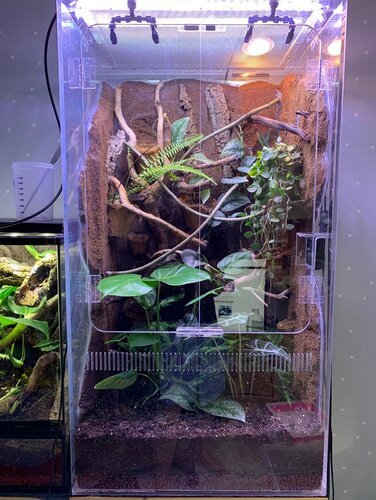Hello, Im looking to build my first bio active enclosure for my future panther chameleon. I was wondering if anyone could give a list of their favorite things to use
(cuc, substrate/substrate mix, plants, drainage layer, lights, etc.
Any suggestions will help a ton and I will really appreciate feedback.
(cuc, substrate/substrate mix, plants, drainage layer, lights, etc.
Any suggestions will help a ton and I will really appreciate feedback.





